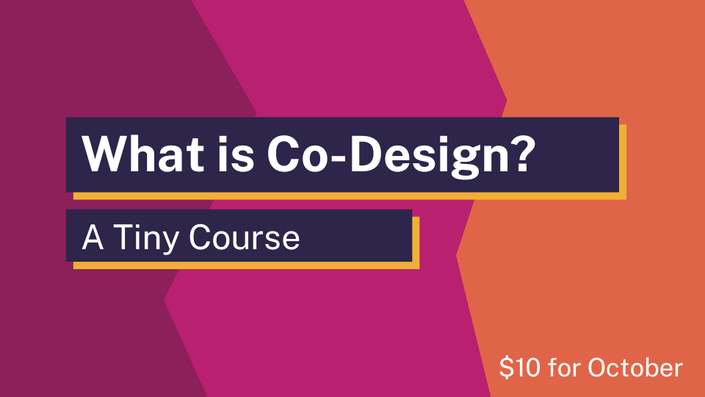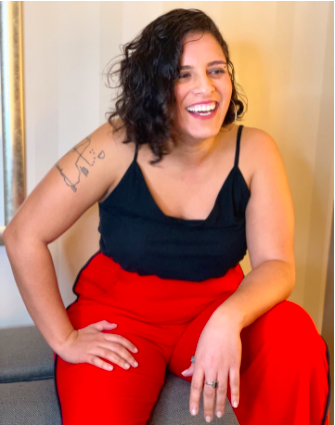
What is Co-Design (Tiny Course)
What this tiny course is about:
We’ve long been frustrated with "Co-Design" and have struggled over the years to clearly articulate the relationship between eXd and co-design. This frustration and difficulty stems from the many ways that co-design is defined across fields and sectors, and the gaps we see between stated intentions and most implementation.
We've begun to articulate our understanding of what Co-Design is and should be through an eXd lens, and this tiny course is the beginning of this work.
What the Tiny Course Contains:
This course contains two recordings. The first is a recording of a 80 minute workshop with 35 minutes of content and the remainder of Q&R digging in deeper. The second video is another recording of a 70 minute workshop with 20 minutes of content and the remainder of Q&R. (Q&R stands for “Questions & Responses, a perhaps slightly more existentially humble version of “Questions & Answers” 😉). These workshops and the Q&R will help you start to reimagine co-design in your own context. There are also 6 publicly available short videos that you can use to start a conversation with others even if they have not taken this tiny course.
The Backstory:
Over the last year we've really been grappling with the relationship between eXd and co-design. A core belief behind the eXd process is that folks have to solve their own problems - so why does my stomach still turn whenever co-design is brought up? And how did we get to a complete eXd process without it?
We believe that Co-design was a band-aid, trying to deal with the fundamental flaws inherent in traditional design and made more salient when dealing with complex social issues - namely the primacy of the formal expert designer who by design has no relationship to the problem being addressed or control over the conditions keeping the problem in place.
equityXdesign starts from a different place altogether. If eXd is the right approach for the problem at hand (and it's not always) then the process and tools will force us to intentionally and systematically grapple with the fundamental issues about power that co-design was trying, but often unable, to mitigate. When the process is fundamentally designed to protect existing power structures, injecting folks (often with less power) into the situation isn't going to actually make things better - even if it makes you feel better.
Instead we have to rethink the process from the ground up - and that's what we've done with eXd. Instead of starting with some generic commitment to involving some group of folks, we start with the problem:
1. What is the problem we're trying to address and how do we understand the conditions that hold it in place from multiple vantage points.
2. Given that, what expertise (using an expansive definition of expertise) is necessary on the design team - necessary for us to understand this problem, test potential solutions and interpret the results of those efforts.
3. And most importantly, how do we create the conditions for all members of the design team to be able to contribute so we can leverage our collective intelligence.
Your Instructor

Dr. Christine Ortiz Guzman is a serial entrepreneur with a passion for innovation through equity-centered design. Her current venture is Equity Meets Design, a think & do tank that builds capacity in folks to use an equity-centered design process to answer the question "How do I do equity?" Their equity by design process supports individuals and organizations to intentionally design their interventions, interactions and institutions for equity and justice.
Christine spent her teenage years creating the national Truth tobacco prevention campaign and launched her first consulting firm at 17, supporting states and other countries interested in implementing the Truth model. She has launched k-12 microschools, consulted for schools in the US and internationally, designed and coached entrepreneurs, coordinated a national competition for innovative school models, and designed and taught graduate-level courses on redesigning schools at the Stanford d.School and Harvard University.
The first in her family to have a college degree, Christine has a BS from MIT, Masters in Education and Non-Profit Management, and a Doctorate in Education Leadership from Harvard University. In all her endeavors, she has been motivated to address the barriers innovators face when tackling complex equity-based social issues, leveraging and accounting for the entirety of who she is, especially her experience being a Latina and a mother from the south. She lives in Orlando, Florida with her teenage and toddler daughters.
